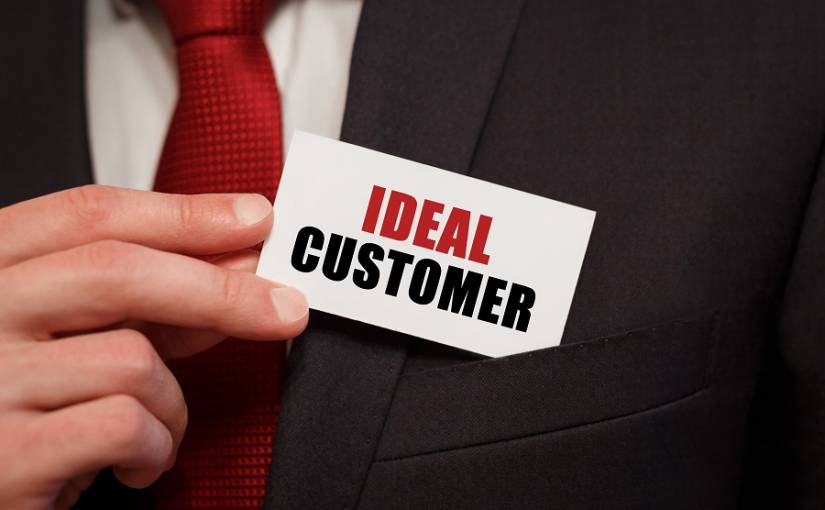In the age of big data and analytics, business success is now measured in the knowledge you have that the competition does not. For a startup in the B2B market, that means there’s a reasonably steep hill to climb right from the beginning. Here is a startup guide to creating an ideal customer profile.
There’s no way that a startup can acquire the same volume of data that more established competitors already have collected.
Instead, they must prioritize which kinds of data will be the most valuable to them as they begin operating, so they can take the most significant advantage of what they do initially collect.
In almost every case, the data that’s most useful to a startup in its early days is the information needed to build complete customer profiles. Building the data collection methodologies to do that requires some careful forethought and planning, though, and isn’t a job to be taken lightly. As a guide for early-stage startups, here’s an overview of how to create an ideal customer profile to use as a data collection roadmap, and how to collect the needed information to do it by using your earliest customers as a guide.
What is a Customer Profile?
To begin the process of building an ideal customer profile for your startup, it’s first necessary to understand what the term means.
This is critical because the concept of an ideal customer profile is often confused with that of a customer persona. In reality, the two things are quite different.
An ideal customer profile is a thorough outline of who your startup plans to sell its products to, and not how you intend to do so. A customer persona, by contrast, contains the rich marketing data that’s used to craft messages that members of your target market will be receptive to. A customer persona is used to direct customer relationship efforts, like the kind that you might use for deepening patient connections in healthcare practice. In that example, an ideal customer profile instead defines who you want to come through the door in the first place.
While the difference seems subtle at first glance, it’s easiest to understand it thusly: an ideal customer profile represents who you want your customers to be, while a customer persona is a representation of who they are.
The reason that’s important to understand is that it’s critical to know what data you need to collect on new customers so you can standardize that process throughout your organization. Without doing this, your sales, marketing, and product development teams might end up directing their efforts toward serving different constituencies – and in the process, they’ll satisfy none of them.
Setting the Right Standards
When you begin the discussions with your team to develop an ideal customer profile, you must first understand that the different parts of your organization may have competing visions of who you should be targeting. What’s most important is to reach common ground and arrive at a customer definition everyone can agree on. To that end, the ideal customer profile you end up with should meet the following conditions:
- Clarity and Specificity – Your ideal customer profile must be precise and easy for anyone to understand with no room for deviation.
- Data Connected – Since defining an ideal customer is an exercise in the hypothetical, it’s necessary to make sure that the profile you create can be connected to actual customer data you are capable of collecting.
- Universal Application – When your ideal customer profile is put to use, it will need to involve data points that are common to all parts of your business. That means it should be broadly compatible will all relevant business systems, from your CRM platform to your marketing automation systems and everything in between.
Gathering Initial Data
To create an ideal customer profile, it’s useful to use whatever customers you already have to guide you.
Begin by identifying which existing customers are spending the most money on your products, and then refine the list by selecting those that you’ve had positive feedback from. That should give you some clarity about who is getting the most value from your products and leave you with a list of customers that will be willing to help you with the next steps in the process.
With your initial list prepared, the next step is to document some meaningful information about them. For each customer, make a note of:
- Location.
- Industry.
- Company size.
- Number of individual contacts within the company.
- Annual operating budget.
If you’re having any difficulty finding out the information you need, contact your customer and explain to them that you’re using them as an example of your ideal customer. If they’re happy with your products, they should be glad to help you, knowing that any information they share will help you to serve their needs even better in the future.
In the conversations that you have, you should also try to find out as much as possible about why each customer is doing business with your firm. Find out:
- Who brought your company to their attention?
- What comments they have, if any, about their dealings with your company?
- Who within their company has the final say on purchases?
- What they’re using your products for?
- How well your products meet their needs?
- What related business needs they have that your company doesn’t satisfy?
With all of the relevant questions answered, the next step is to compile all of the data and look for commonalities between your best customers. In almost every case, you should find some overlap in the data, but what you’re really looking for is the least common denominator for each data point. Once you’ve worked that out, you’re ready to create a picture of your ideal customer.
Creating Your Ideal Customer Profile
When you reach this point, creating an ideal customer profile is a simple matter of listing your conclusions on one, easy-to-understand document.
In general, it should spell out in very specific terms:
- The industry your startup is targeting
- The geographic region where they’re located
- Their average budget
- The average business size
- The top three reasons customers use your product
- What specific needs your products meet
- The most common way potential customers find your firm
- The average size of the decision-making chain (how many people are involved in each purchase)
- Why your ideal customer would choose you over the competition
How to Use Your Ideal Customer Profile
From this point on, your startup should orient its sales, marketing, and product development efforts to satisfy the ideal customer you have defined. From a data collection standpoint, it should also be used as a template as to what information to collect from every potential customer as you make contact with them. It can also guide your marketing research as you try to identify new leads.
Doing this should help you to target the exact types of customers that are likely to establish long-term relationships with your company. It should also set you on the path toward collecting usable customer data that can then grow into a powerful customer analytics operation. That can, in turn, help you to build the aforementioned customer personas and feed your efforts at personalization.
It’s important to remember, however, that your ideal customer profile isn’t a static document. In fact, as your business grows, the profile of your ideal customer will change with it. That means you’re going to have to revisit this process at regular intervals to make sure that you’re still serving your most valuable customers’ needs. If it turns out that you’re not – make the changes that the data suggests, and it’s sure to pay off.


























